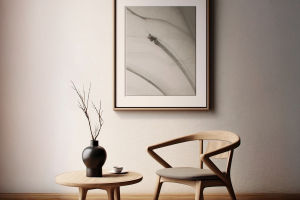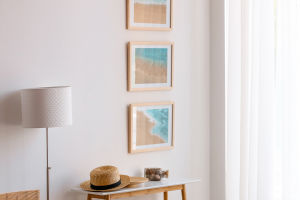When you open a digital art program and start creating, one of the first things you'll encounter is the concept of layers. At first glance, it might seem simple—just stacking images or colors on top of one another.
But mastering layering techniques is one of the most powerful ways to create depth, texture, and visual complexity in your work. Understanding how to leverage this tool can elevate your digital designs to a whole new level.
What Are Layers in Digital Art?
In digital art, a layer is essentially a separate sheet on which you can paint, draw, or place images. Each layer can be manipulated independently, which gives you incredible flexibility in the creation process.
Whether you're blending colors, adding textures, or adjusting the transparency of an element, layers allow for easy modifications without affecting the entire artwork.
The power of layers lies in their ability to separate elements. For instance, you might have a background layer, a mid-ground layer with some objects, and a top layer with final touches like highlights or text. This modular approach makes it easier to edit specific parts of your artwork without having to redo everything from scratch.
1. Layer Types and Their Uses
In digital art software, there are several types of layers you'll typically encounter, each with unique properties:
1.1. Background Layer
This is usually the base of your artwork, where you place your environment or scene. It's important to get the background right early on, as it sets the tone and atmosphere for the entire piece.
Example: If you're creating a landscape, start with the sky, ground, and distant mountains on your background layer.
1.2. Adjustment Layers
These layers allow you to modify the properties of other layers without directly affecting them. You can adjust things like brightness, contrast, hue, and saturation non-destructively.
Example: Use an adjustment layer to tweak the color balance of a landscape scene without touching the original image.
1.3. Text Layers
Text layers are used when you need to add typography to your design. These layers are flexible, allowing you to adjust font, size, color, and position with ease.
Example: Add a title to your artwork using a text layer, making sure it's editable at any time.
2. Organizing Layers for Efficiency
When you begin working with multiple layers, it can quickly become chaotic. Without a system for organizing them, you might find yourself hunting through dozens of layers just to make a small change. Here's how to stay on top of your layer game:
2.1. Naming Layers
It sounds basic, but naming your layers properly can save you hours of confusion. Give each layer a name that clearly identifies its role in the artwork.
Example: Instead of “Layer 1,” name it “Sky Background” or “Main Character,” so you can easily navigate between them.
2.2. Grouping Layers
Many art programs allow you to group similar layers together. This helps keep your workspace organized and allows you to apply changes to multiple layers at once.
Example: Group all the layers related to your character (e.g., hair, clothes, and accessories) into one folder for quick access.
2.3. Layer Opacity and Visibility
Use opacity and visibility toggles to quickly view how different layers interact. You can reduce the opacity of layers to see how underlying elements blend together or hide layers entirely to focus on specific areas of your artwork.
3. Blending Layers for Depth and Texture
Layer blending is one of the most exciting aspects of working with digital art. By applying different blending modes, you can create unique effects that add texture and depth to your designs. These modes control how the colors and shadows of one layer interact with the layers below it.
3.1. Common Blending Modes
• Multiply: Darkens the image by multiplying the base color with the layer color. Great for shading or adding shadows.
• Overlay: Combines the effects of both multiply and screen modes, perfect for adding highlights or creating contrast.
• Screen: Lightens the image by screening the base color with the layer color. Ideal for adding light effects or glowing elements.
Example: If you have a sunset scene, use the "Multiply" mode to add darker shadows to the ground and the "Screen" mode to lighten the sky and create a glowing effect around the sun.
4. Masking: A Non-Destructive Way to Edit
Masking is a technique that allows you to hide parts of a layer without permanently erasing anything. This non-destructive method means you can always go back and reveal hidden elements or adjust them later.
4.1. Layer Masks
A layer mask is like a stencil over your layer. It allows you to paint in black to hide parts of the layer or white to reveal them. Gray areas will be partially transparent.
Example: Use a layer mask to gradually blend the edges of a character into the background, creating a smooth transition without losing the original artwork.
4.2. Clipping Masks
A clipping mask allows you to use the contents of one layer to define the visibility of another layer. This is especially useful for adding textures or effects within specific areas of your artwork.
Example: Apply a textured pattern to a shape using a clipping mask so the pattern only appears within the shape's outline.
5. Finalizing Your Artwork with Layers
Once you've used layers to build up your design, it's time to fine-tune everything. Here are a few tips to ensure your artwork is polished and professional:
5.1. Layer Merging
Once you're satisfied with how everything looks, you may choose to merge certain layers for efficiency. However, always keep a backup of your original layers in case you need to make adjustments later.
5.2. Layer Effects
Don't forget to explore the different layer effects available in your software, like drop shadows, glows, and textures. These can add a final touch that makes your artwork stand out.
Unlocking the Power of Layers
Mastering layers in digital art is one of the most valuable skills you can develop. By organizing, blending, and masking your layers, you can create art that's not only beautiful but also flexible and easy to adjust. Whether you're a beginner or a seasoned artist, understanding the full potential of layers will take your digital designs to the next level.
So, the next time you open your art program, dive into the layers with confidence. With a little practice, you'll soon see how these simple tools can transform your artwork into something truly exceptional.


